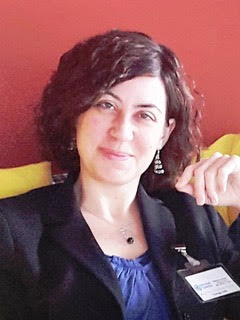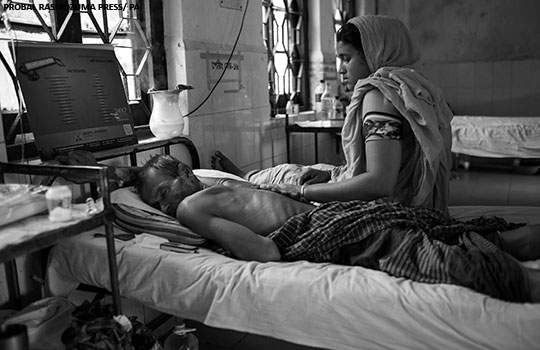After decades of neglect by the drugs industry, the fight against tuberculosis will be even harder now that delamanid’s role seems to be rather limited
 When the new TB drug delamanid was approved by the European Medicines Agency (EMA) in 2013, it was one of only two new drugs approved for the treatment of multidrug-resistant tuberculosis (MDR-TB) in more than 40 years. Preliminary findings suggested that this new drug could have a promising role for treatment when used with an optimised background regimen (OBR)—results that led to the World Health Organization (WHO) conditionally endorsing the drug in 2014 and providing interim policy guidance.
When the new TB drug delamanid was approved by the European Medicines Agency (EMA) in 2013, it was one of only two new drugs approved for the treatment of multidrug-resistant tuberculosis (MDR-TB) in more than 40 years. Preliminary findings suggested that this new drug could have a promising role for treatment when used with an optimised background regimen (OBR)—results that led to the World Health Organization (WHO) conditionally endorsing the drug in 2014 and providing interim policy guidance.
A lot was riding on delamanid’s effectiveness, but in October last year new evidence was shared at the 48th World Union Conference, which failed to support this postulation. While delamanid’s safety profile received unreserved confirmation, the final results of Otsuka’s phase III, multicentre, randomised, double blind, placebo controlled clinical trial showed that there was no clinically relevant or statistically significant difference between the regimen containing delamanid and placebo in treatment success, all cause mortality, and two and six month sputum culture conversion.
Since such conclusions were made public, the international community has been waiting with bated breath to hear the WHO’s verdict on delamanid for the treatment of MDR-TB. The awaited policy announcement arrived earlier this month with the release of a position statement that lowers expectations of this new drug, and which might undermine its global uptake.
In its position statement, WHO states that it “will conduct an extensive review of its MDR-TB policy guidelines in mid-2018, which will include consideration of data from observational studies on delamanid […] Until then the current interim and conditional guidance on delamanid remains in place. However, national TB programmes and other stakeholders are advised to only add delamanid to a longer MDR-TB regimen when it cannot be composed according to WHO recommendations. When an effective and well-tolerated longer MDR-TB regimen can be otherwise composed, the addition of delamanid may not be warranted.”
So what does this mean for the half a million people who develop MDR-TB each year? After more than 40 years of neglect by the drugs industry, the fight against the leading infectious killer will be even harder now that delamanid’s role seems to be rather limited.
The management of MDR-TB remains one of the greatest challenges in TB control for a number of reasons. Above all, despite increasing scale up, rapid TB diagnosis and drug resistance testing are still largely inaccessible to a vast proportion of the world’s population, hindering the prompt identification of cases and causing tremendous delays in initiating treatment. Secondly, even when MDR-TB is correctly detected, access to treatment and adequate support for patients at each stage of this difficult journey often falls short from expectations, partly due to high costs and lack of a strong health system capacity. Thirdly, current regimens are based on poorly tolerated drugs with suboptimal efficacy, which highlights how the development of innovative therapeutic tools is extremely important and urgently needed. In fact, the common occurrence of serious adverse effects is a major obstacle to adherence and retention in care, and the treatment success rate among MDR-TB patients, globally, is as low as 54%.
A new ray of hope emerged in May 2017 with the approval of the MDR-TB shorter regimen (9-12 months under well defined circumstances against the regular 18-24 months). So it may be that the space for the possible use of delamanid (which is strictly confined to longer regimens) in the MDR-TB panorama becomes even narrower.
Although some within the international community have expressed fears that shorter regimens might lead to an increase in drug resistance (a worry which, at present, is not supported by any scientific evidence), we should recognise some major advantages resulting from their adoption. In fact, shorter regimens would enable a dramatic increase in access to treatment in low and middle income countries with a high TB burden, as well as a significant improvement in drug adherence, both of which would bring about better outcomes for patients.
However, shorter regimens cannot be the only answer to a challenge that is on the scale of MDR-TB. Consequently, the rapid development of new drugs and new therapeutic cocktails should remain a priority in the TB research agenda.
Now more than ever, the anti-TB drug pipeline needs to be expanded. We urgently need more funding for drug development so that we can look forward to finally marking the turning point against TB and MDR-TB. As investments from pharmaceutical companies on drug development are appallingly negligible, especially at the earliest stages, everything is in the hands of public financing and philanthropists.
The delegates of 114 countries, including 75 ministers, who convened in Moscow last November for the very first WHO Global Ministerial Conference on Ending TB, committed to ensure the rapid achievement of universal health coverage and to allocate sufficient funds for both service implementation and research. Let’s see whether the promise of these major and unprecedented political efforts will quickly translate into long term governmental and donor commitment in support of TB research and development.
Giorgia Sulis is an Italian infectious diseases physician, who currently works with Madhukar Pai’s team at McGill University (Montreal, Canada), where she is enrolled in the PhD programme of epidemiology. Twitter @giorgiasulis
Competing interests: None declared.
